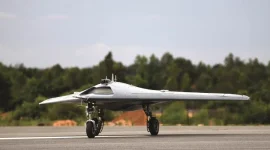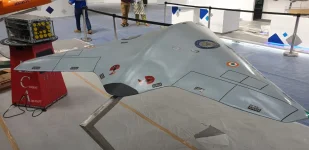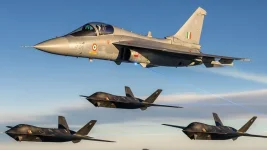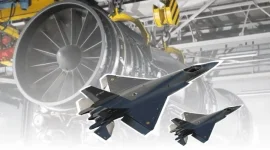- Views: 5K
- Replies: 10
India's advanced stealth drone program, known as the Ghatak Unmanned Combat Aerial Vehicle (UCAV), is nearing a critical development phase but requires final approval from the Ministry of Defence to proceed.
The project, which aims to create a state-of-the-art autonomous combat aircraft, now awaits a significant funding allocation of approximately ₹3,000 to ₹5,000 crore. This investment is essential for the construction of the first operational prototypes.
The Ghatak program is being spearheaded by the Aeronautical Development Agency (ADA) under the Defence Research and Development Organisation (DRDO).
Its progress is closely linked to two other major Indian defence projects: the Kaveri engine and the Advanced Medium Combat Aircraft (AMCA).
The drone's design heavily relies on technologies developed for the AMCA, India's fifth-generation fighter jet program. This includes the use of advanced stealth materials, special radar-absorbent coatings, and sophisticated electronic systems, which will help control costs and accelerate the development timeline.
At the core of the Ghatak UCAV will be a new, domestically produced jet engine. The Gas Turbine Research Establishment (GTRE) is developing a special variant of the Kaveri engine, known as the Kaveri Derivative Engine (KDE).
This engine is being specifically designed without an afterburner to produce 49 kilonewtons (kN) of dry thrust, making it highly fuel-efficient and suitable for long-duration subsonic missions.
The certification of this engine, expected by 2026, is a crucial milestone that must be met before the program can receive full clearance, which is anticipated around 2027.
Designed as a 12 to 13-tonne aircraft, the Ghatak will feature a "flying-wing" design, which lacks a distinct fuselage and tail, giving it a sleek, bat-like appearance. This shape significantly reduces its visibility to enemy radar, allowing it to penetrate heavily defended airspace.
The UCAV is envisioned as a multi-role platform capable of conducting precision strikes on ground targets like enemy air defence systems and infrastructure, as well as engaging in air-to-air combat using beyond-visual-range missiles like the indigenous Astra.
The development of the Ghatak is a cornerstone of India's 'Atmanirbhar Bharat' (Self-Reliant India) and 'Make in India' initiatives in the defence sector.
Upon entering service with the Indian Air Force (IAF), the drone will enhance national security by providing a formidable unmanned asset that can perform high-risk missions without endangering pilots.
Its successful development will also place India among a select group of nations operating advanced combat drones, such as the United States with its MQ-25 Stingray, Russia with its S-70 Okhotnik-B, and China with its GJ-11 Sharp Sword.




